On the corner of Grant Ave and California St and just two blocks away from the famous San Francisco Chinatown’s Dragon Gate, Old Saint Mary’s Cathedral is known for being the oldest church in the city, dating back to 1854, having survived the 1906 earthquake.
Today, along with their ministering services, Old Saint Mary’s Cathedral houses Groceries for Seniors, a weekly delivery program (now 20 years strong) staffed with senior volunteers and part-time employees that have fostered a hard-working community while giving back.
“We’re all one big family,” said Clarissa, one of the volunteers.
Taking Care of Each Other
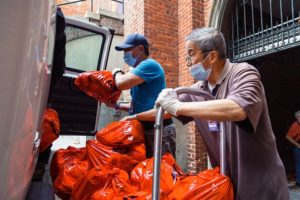 Groceries for Seniors operates out of the church basement where “each week, we create over 1,100 bags that we distribute to low-income seniors throughout the San Francisco area,” said Tim Thompson, who coordinates the deliveries. “We’re delivering about 240 to 250 bags per day.”
Groceries for Seniors operates out of the church basement where “each week, we create over 1,100 bags that we distribute to low-income seniors throughout the San Francisco area,” said Tim Thompson, who coordinates the deliveries. “We’re delivering about 240 to 250 bags per day.”
The grocery bags are pre-packed with fresh produce, grains, and protein, which is partially provided in partnership by the Food Bank and supplemented with donations from local grocery retailers. On this Monday, the volunteers were packing the bags with eggs, onions, zucchini, yellow squash, cauliflower, and various fruits.
“I worked with John Meehan, the founder of the Haight Ashbury Food Program, and Jesuit Brother Jack Graham to launch Groceries for Seniors back in 1998 and have been a board member ever since,” said Chief Programs Officer Sean Brooks, who oversees all the Food Bank’s services. “I am proud of our long and close partnership and the many people who can rely on Groceries for Seniors every week for a delivery of fresh, healthy food.”
For the volunteers, it’s more than just assembling bags to serve their community. It’s what they enjoy doing, and it shows.
“Whatever they need, we do our best to help the seniors, which makes me very happy,” said Mimi, another volunteer.
Food Brings Us Together
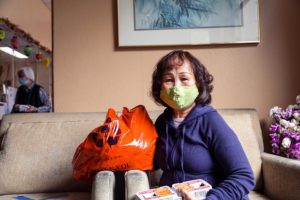 By around 10:30 in the morning, with the back of his van fully loaded, the delivery driver heads out to deliver the grocery bags. On Mondays, they deliver to Mei Lun Yuen, an apartment building in Chinatown that houses mostly low-income seniors and families of Chinese descent.
By around 10:30 in the morning, with the back of his van fully loaded, the delivery driver heads out to deliver the grocery bags. On Mondays, they deliver to Mei Lun Yuen, an apartment building in Chinatown that houses mostly low-income seniors and families of Chinese descent.
Once the driver unloads the bags into the building lobby, one of the property managers of the building uses the intercom and notifies the residents that they can come down to pick up their bags. Before the COVID vaccine was widely distributed some buildings, like Mei Lun Yuen, had to do contactless delivery due to social distancing guidelines. Now the residents are happy to catch up with each other and the volunteers as they grab their bags and the conversation often turns to meals they are looking forward to.
“I’m happy to get the food,” said Liyi, a resident. “I sometimes make noodles, boiled eggs and potatoes—some simple meals I love.”
Cindy, another resident, enjoys making dishes like spaghetti. “I use spaghetti sauce, onions, and meatballs to make it,” she said.
Because all the senior residents are retired, they rely on food delivery to supplement their weekly food budget. That is why the Groceries for Seniors program is essential for low-income seniors, and the Food Bank is working with them to ensure that food is distributed on a weekly basis so that residents can make their favorite dishes.
Volunteering with a Purpose
Most of the volunteers at the Groceries for Seniors programs are also seniors and retired. They understand how important this program is and have the urge to help their own. This is true for Yip.
“We’re still able to move around, so I’m here to help out my community,” she said. “I’ll only stop helping if I can’t move anymore.”
Many of the volunteers only speak Chinese but can still connect with one another through the act of volunteering.
“It’s important to take care of seniors and families, and we are a family here,” said Yip.
Support the Groceries for Seniors Program
Learn more


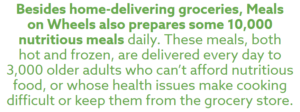
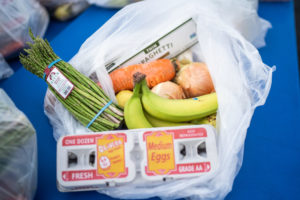 Partners like Meals on Wheels, as well as our own
Partners like Meals on Wheels, as well as our own 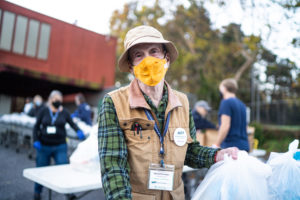
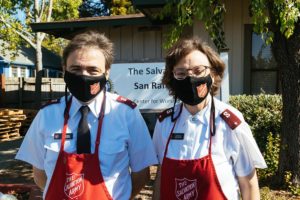 Soup. Soap. And Salvation. Since 1865, The Salvation Army has taken a holistic approach to serve those with the greatest need in our community. According to Diane Shatto, a Lieutenant and ordained minister at San Rafael’s branch of The Salvation Army, you can’t nourish people’s spirits until you nourish them with food. “That’s why our food pantry and home-delivered groceries are key activities for us.”
Soup. Soap. And Salvation. Since 1865, The Salvation Army has taken a holistic approach to serve those with the greatest need in our community. According to Diane Shatto, a Lieutenant and ordained minister at San Rafael’s branch of The Salvation Army, you can’t nourish people’s spirits until you nourish them with food. “That’s why our food pantry and home-delivered groceries are key activities for us.”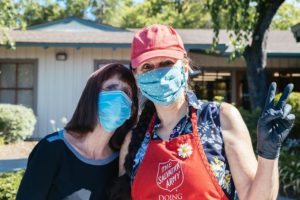 Carol Gotti has been volunteering with the Salvation Army’s food program for over ten years, and the participants are a lot more to her than names and numbers. “I’ve gotten to know about people’s lives, and you get a feeling about the things that bring people joy,” she said.
Carol Gotti has been volunteering with the Salvation Army’s food program for over ten years, and the participants are a lot more to her than names and numbers. “I’ve gotten to know about people’s lives, and you get a feeling about the things that bring people joy,” she said. 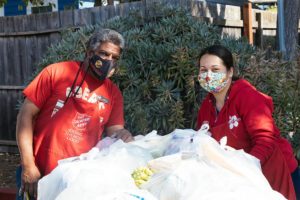 “I was the second youngest of five children with three older brothers who were always more aggressive than me about grabbing the food at dinnertime. I had hunger pains all the time, and other kids at school would make fun of me because I was skinny. It makes you feel inferior, you lose motivation, and you lose hope. And that’s how the cycle of poverty continues.”
“I was the second youngest of five children with three older brothers who were always more aggressive than me about grabbing the food at dinnertime. I had hunger pains all the time, and other kids at school would make fun of me because I was skinny. It makes you feel inferior, you lose motivation, and you lose hope. And that’s how the cycle of poverty continues.”
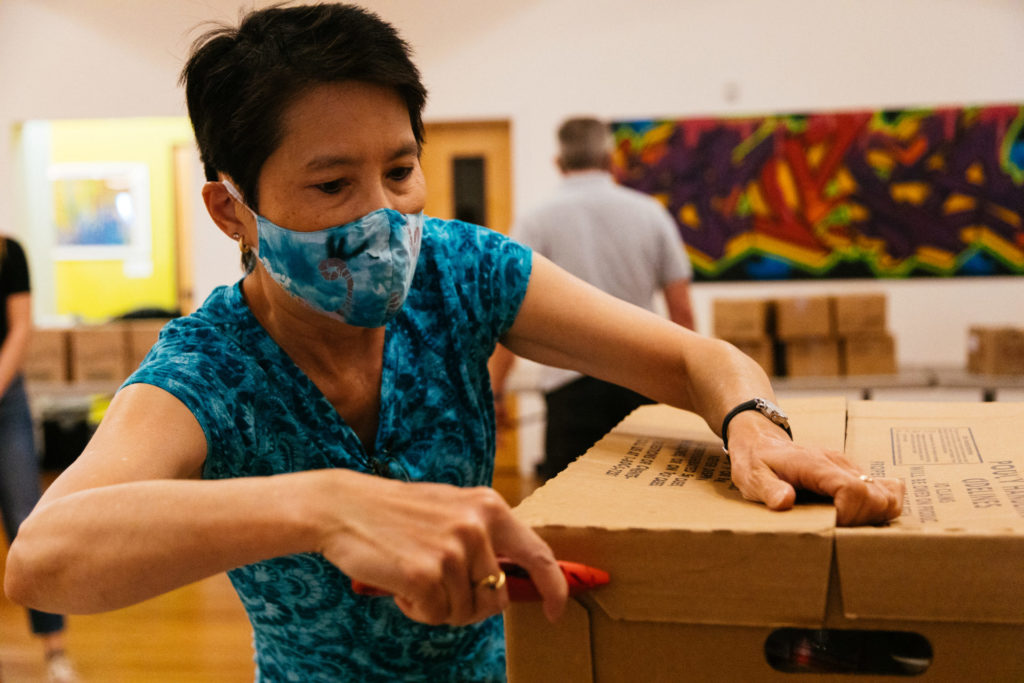
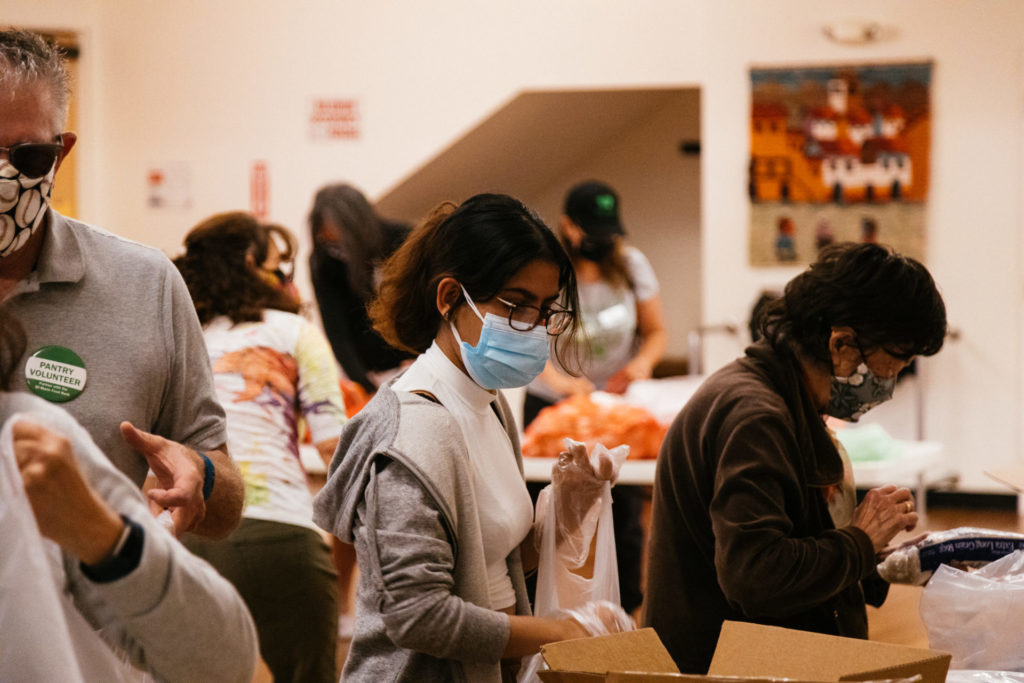
 Groceries for Seniors operates out of the church basement where “each week, we create over 1,100 bags that we distribute to low-income seniors throughout the San Francisco area,” said Tim Thompson, who coordinates the deliveries. “We’re delivering about 240 to 250 bags per day.”
Groceries for Seniors operates out of the church basement where “each week, we create over 1,100 bags that we distribute to low-income seniors throughout the San Francisco area,” said Tim Thompson, who coordinates the deliveries. “We’re delivering about 240 to 250 bags per day.” By around 10:30 in the morning, with the back of his van fully loaded, the delivery driver heads out to deliver the grocery bags. On Mondays, they deliver to Mei Lun Yuen, an apartment building in Chinatown that houses mostly low-income seniors and families of Chinese descent.
By around 10:30 in the morning, with the back of his van fully loaded, the delivery driver heads out to deliver the grocery bags. On Mondays, they deliver to Mei Lun Yuen, an apartment building in Chinatown that houses mostly low-income seniors and families of Chinese descent.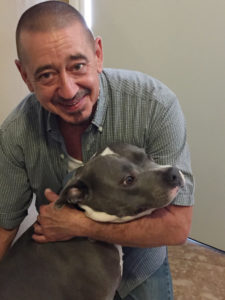 Fourteen years ago, Dru Devoe got on his Harley Davidson motorcycle and left his home in Florida with only clothes and whatever he could fit in his saddlebags. He landed in the Bay Area and eventually settled in Marin County.
Fourteen years ago, Dru Devoe got on his Harley Davidson motorcycle and left his home in Florida with only clothes and whatever he could fit in his saddlebags. He landed in the Bay Area and eventually settled in Marin County.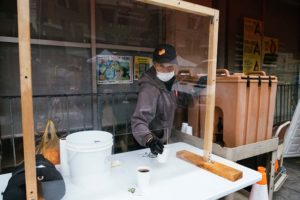 On a cold, damp San Francisco morning in late June, Clifford, William and Tommy sat together eating breakfast and sipping coffee in the parking lot of
On a cold, damp San Francisco morning in late June, Clifford, William and Tommy sat together eating breakfast and sipping coffee in the parking lot of 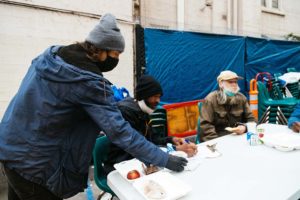 Food is central to creating community. When we can come together around a shared meal, we build connections, we foster understanding, and we grow together. And this isn’t true just of a family dinner or a special holiday celebration—meal programs like Glide’s are part of the fabric of our community.
Food is central to creating community. When we can come together around a shared meal, we build connections, we foster understanding, and we grow together. And this isn’t true just of a family dinner or a special holiday celebration—meal programs like Glide’s are part of the fabric of our community.
Share